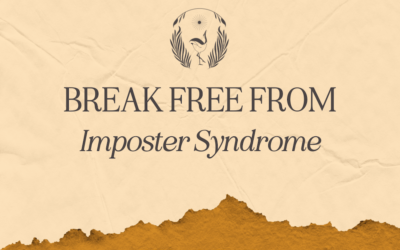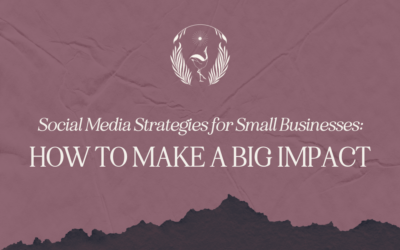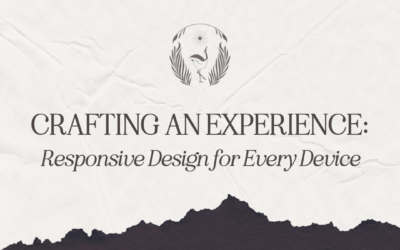
Embracing Eco-Conscious Habits
Bring Sustainability Into Your Personal and Professional Life
Sustainability is an important core value of mine in my personal life and I try to bring these practices into my business as well. And with the world’s growing concerns about the climate and waste, the sustainability movement is growing as well. Here are some eco-friendly practices that can be used to embrace sustainability.
Eco-Consciousness in Your Personal Life
Embracing sustainability in your daily life can be intimidating, but it is less daunting if you take small steps. There are ways to make small differences in your lifestyle that can make a big impact, and plus make your life a little easier.
Recycling Unwanted Clothes
If you are someone who takes advantage of spring cleaning to get your life back together, then you probably have realized that you have an abundance of clothing or other items that you know longer need. That’s where donation and recycling comes in.
While it’s the typical reaction to donate clothes to a local charity shop, unfortunately these clothes are still likely to end up in a landfill instead of a new home. That’s not to say you should never donate clothes to thrift stores again, but consider alternate options when you are donating large amounts of clothes.
For example, there are textile recycling companies that will take your old clothes and recycle them into a new material that can have a completely second life. Some of these companies include Freecycle, Retold Recycling, and Helpsy.
There are also “Buy Nothing” Facebook groups where you can trade your unwanted items with members of your local community.
Buying Sustainable Clothing
So let’s say you went a little overboard on donating your old clothes, but then you realize you actually donated too much of your closet. The next step you can take in your personal sustainable journey is purchasing from sustainable clothing companies rather than fast fashion brands.
Sustainable clothing brands are typically more expensive than your standard clothing brand, but the trade-off is ethically made and sourced high quality clothing. However, there are also sustainable clothing companies out there that are more affordable than others.
Eco-Consciousness in Your Business
Being eco-friendly with your business considers a little more thought than sustainability in your personal life. If you are labeling yourself as a sustainable business, you want to try your best to actually follow through with eco-friendly practices. In today’s eco-conscious world, businesses are increasingly expected to not only deliver quality products but also do so in a manner that minimizes environmental impact.
Consumers who are serious about their sustainability will look into your practices, and many would be disappointed to find out if you are not practicing sustainable practices especially if you are labeled as one.
Researching Suppliers and Source Materials
One first step towards becoming an environmentally-friendly business is taking note of where your business’s supplies come from and how they are made.
As a sustainable business, you should prioritize working with environmentally responsible suppliers and use local source materials to reduce your carbon footprint. This includes packaging, which is often overlooked as a significant contributor to waste. Changing how you package your products presents a prime opportunity for businesses to demonstrate their commitment to sustainability. Collaborate with suppliers, manufacturers, and packaging experts to explore innovative solutions for eco-friendly packaging. Stay updated on emerging technologies and materials that offer improved sustainability without compromising functionality or aesthetics.
Speaking of aesthetics, companies and graphic designers can and should collaborate to create more eco-friendly packaging designs. Here are some ideas on how to achieve this:
- Material Selection: Choosing the right materials is crucial in designing sustainable packaging. Opt for biodegradable, recyclable, or compostable materials whenever possible. Materials such as recycled paper, cardboard, bioplastics, and compostable polymers can significantly reduce the environmental footprint of packaging. Knowing the materials that will be used during the printing process will also help the designer in planning out a design that will translate well on the final product.
- Minimalism and Efficiency: Embrace minimalist designs that prioritize functionality and efficiency. Streamlining packaging not only reduces material usage but also lowers shipping costs and carbon emissions associated with transportation. Designers should focus on creating packaging that uses the least amount of material while still effectively protecting the product.
- Biodegradable Inks and Finishes: Traditional printing inks and finishes often contain harmful chemicals that can be detrimental to the environment. Switching to biodegradable or soy-based inks and eco-friendly finishes reduces the ecological impact of printing processes while maintaining high-quality results. While this may not be an option with every printing company, it is still worth asking and looking into.
- Incorporating Reusability: Encourage reusability by designing packaging that can serve a secondary purpose or be easily repurposed by consumers. Whether it’s a sturdy cardboard box that can be transformed into storage or a glass jar that can be reused for storage or as a decorative item, incorporating reusability adds value to the packaging and reduces waste.
- Emphasizing Education: Educate consumers about the eco-friendly aspects of your packaging design. Clearly communicate the materials used, recycling instructions, and any eco-friendly certifications or labels. Empowering consumers with information helps them make more informed and sustainable choices.

A great example of sustainable packaging. Photo by Toa Hetiba on Unsplash
Reduce Water and Energy Use
Even small businesses can use an overabundance of water and energy. Here are some ways you can conserve your water and energy use as a business in your brick-and-mortar location:
- Fix any water leaks you encounter in your business
- Install water-efficient taps
- Switch off your business’ heating/cooling after hours
- Replace incandescent bulbs with LED bulbs
- Regularly clean and replace air filters
Final Thoughts
The sustainability movement is becoming a big deal to many consumers and businesses, and there are a number of ways to integrate eco-friendly practices in your own life, both in and out of the office. It can be overwhelming knowing where to begin, but start small with one change at a time. Even the smallest changes can make an impact if we are all making an effort.
Have you outgrown your brand or need to take it to a new level? Schedule a strategy call to see how I may be able to support you through the process.
You May Also Like:
Breaking Free from Imposter Syndrome
Overcoming Imposter Syndrome in Your BusinessImposter syndrome is a common struggle for many professionals, including brand designers and small business owners. Whether you’re a seasoned expert or just starting out, feeling like you’re not good enough can impact your...
Social Media Strategies for Small Businesses: How to Make a Big Impact
Amplify Your Brand's PresenceUtilizing social media to be intentional in telling your brand's storyIn today's world, social media has become an essential tool, if not a necessity, for small businesses looking to make a significant impact with limited resources. At JC...
Crafting an Experience: Responsive Design for Every Device
The Art and Science of Responsive DesignImproving User Experience One Pixel at a TimeIn a world where smartphones, tablets, laptops, and desktops coexist, ensuring your website looks stunning across all devices isn't just a bonus – it's a necessity. The world of...



